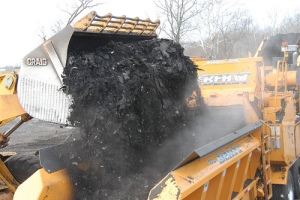 Today, a new guest post, by the team at ModSpace, a nationwide vendor of modular buildings which offers mobile office and prefab office solutions. [And yes, I realize that ModSpace has a vested interest in this subject, but the article is interesting nonetheless!]
Today, a new guest post, by the team at ModSpace, a nationwide vendor of modular buildings which offers mobile office and prefab office solutions. [And yes, I realize that ModSpace has a vested interest in this subject, but the article is interesting nonetheless!]
As our country turns more attention to global warming and environmental awareness, more citizens, businesses, and industries are looking for ways to reduce their carbon footprint and lessen their impact on the environment. Modular construction is becoming a vital player in a world of green industries. It’s also quickly growing in popularity among American companies and individuals.
Modular construction has revolutionized the way we approach large-scale construction projects while still minimizing environmental impact. In previous years, when conventional on-site construction methods appeared to be customers’ only option, creating large amounts of material waste and airborne contaminants was an unavoidable result of the building process.
According to the National Science and Technology Council, conventional methods of onsite construction are responsible for placing approximately 135 million tons of waste (roughly the same weight of 14,647 fully-loaded Arleigh Burkeclass US Navy Destroyers) into landfills every year. This huge amount of trash can be attributed to construction material packaging, unused or scrap building materials, and related waste.
Modular buildings, which are fabricated off-site in a protected factory setting by a team of design specialists, have the potential to reduce construction waste by up to 90%. Modular Construction can be “greener” due to a variety of factors, including:
- limited use of packaging;
- built in protection of materials from weather damage and project vandalism;
- assembly-line efficiencies; and
- the ability to store leftover materials in the factory facility to be used either for other projects or to be recycled.
In addition to reducing environmental impact during the manufacturing process, modular construction also causes significantly less site disruption, which translates to a diminished need for heavy machinery that can emit large amounts of greenhouse gasses over the course of a construction project.
Because modular homes and businesses are built to endure the stresses of transportation from the factory to the foundation site, structures have a long service life. And as a result of simply assembling the structure in sections, if the building ever needs to be relocated or repurposed, it can be disassembled and transported with minimal hassle or cost. In that way, modular buildings become reusable and recyclable, even further reducing the impact on our environment in the future.
Due to significant advancements in green modular construction technology and engineering efficiency, the modular construction method is becoming a viable, cost-effective option for those customers seeking to build or expand while minimizing their carbon footprint.
Editor’s Note: Do you have any questions or comments about modular construction and its potential to be more “green” than traditional construction? Share in the comments section, below. And remember, Tuesday there is a Construction Contracts CLE webinar. Two free tickets are still available– email me asap if you want to claim one.



